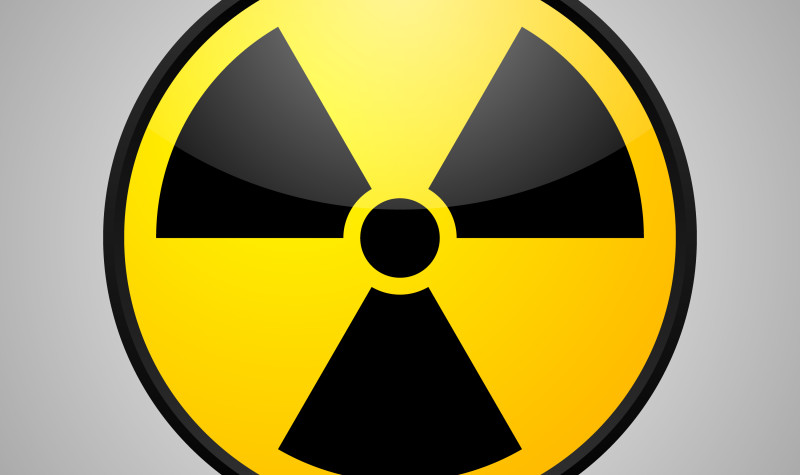This unloved commodity could be about to wake up from a long bear market

This commodity has been stuck in a brutal bear market for almost a decade. Yet it just might be about to wake from its slumber.
The world is awash with easy money which has inflated asset prices across the board – stocks, bonds, property, commodities – you name it. But one commodity has remained untouched by the sugar rush. In fact, this commodity has been stuck in a brutal bear market for almost a decade. Yet it just might be about to wake from its slumber. And when it does, incredible things could happen.
The commodity I’m referring to is of course uranium. The mere mention of nuclear power is enough to strike fear into the hearts of many, but in reality, it is one of the most misunderstood sectors around. Readers may very well have been tuning into Sky’s brilliant drama Chernobyl of late, which will no doubt have added to the public perception of nuclear as a very dangerous business indeed. But as investors, we must deal in the facts.
Nuclear energy: a growth market?
| Master Investor Magazine
Never miss an issue of Master Investor Magazine – sign-up now for free! |
Given the shift to renewables and the impact on public opinion following the Fukushima disaster, you may be forgiven for thinking that the nuclear power sector is shrinking, but that is not the case. There are 450 nuclear reactors in operation around the world today, with another 50 currently under construction. Of those, 13 are due to come online this year, followed by another 13 in 2020. More significantly, there are another 126 reactors planned and another 383 proposed.
This may seem strange and somewhat surprising, as our western-centric media is mostly littered with reports of nuclear decommissioning – Germany, for example, has been closing down reactors of late. But the rising superpowers China and India are engaged in massive nuclear expansion programmes as a means of acquiring ‘clean’ and reliable baseload power to support their growing economies whilst at the same time addressing the pollution issues in many of their major cities.
So, with all this extra demand coming online, you’re probably guessing that the uranium price has already priced it in, right? No, is the short answer. Uranium currently trades at around $25/lb on the spot market, which is well below the $60/lb that the IEA (International Energy Agency) estimates miners need the price at in order to simply recover their costs. With prices having been below the $60/lb level for eight years, the impact on production has been significant. Cameco (NYSE:CCJ), the largest company in the sector, has had its MacArthur River mine – the biggest uranium mine in the world – on care and maintenance since late 2017. Meanwhile, many of the smaller uranium companies have done the same with their own properties. Still more have ceased to exist.
As a result of all this, the demand/supply dynamic for uranium is unbalanced. The consumption of uranium in 2018 was 200 million lbs and supply (primary production) was 140 million lbs. What’s more, this deficit is forecast to increase in 2019 and beyond.
The coming uranium bull market
But if demand is outstripping supply, why isn’t the spot price racing ahead?
It’s a fair question, but the answer lies in the fact that the uranium sector is a market like no other. Only 10% of transactions in uranium take place on the spot market – the rest is accounted for by the long-term contracts agreed between the utilities and the uranium mining companies. After Fukushima, uranium inventories were running high and utilities have since been holding off signing new contracts and instead opting to run down these inventories. On top of that, the whole sector is awaiting the outcome of a petition filed by some US producers with the Department of Commerce under what’s known as Section 232. These producers allege that the US uranium mining sector has been decimated by unfair competition, and they want the federal government to legislate to the effect that 25% of the uranium used in US reactors must be purchased domestically. A decision on this matter from the Trump administration is expected no later than 15th July.
Regardless of which way the section 232 decision goes, it should clear the way for new contracts, as it is essential that future supplies are secured by the utilities – both in the short term for the continued operation of the existing reactors, and in the long term for the nuclear capacity yet to come on-stream. Alongside this, it is interesting to note the appearance of financial buyers for uranium on the open market. Cameco, for one, has been active in this regard. Whilst cutting production, it has depleted its own inventories and purchased uranium on the spot market in order to meet its commitments. Meanwhile, Yellow Cake (LON:YCA), a London-listed investment vehicle, has raised c. $200 million to invest in the commodity itself. The uranium market is a coiled spring and the stage appears to be set for some interesting times ahead.
How to play it
| Master Investor Magazine
Never miss an issue of Master Investor Magazine – sign-up now for free! |
In the last bull market, the returns achieved by some uranium producers were nothing short of life-changing. Australian-listed Paladin Energy (ASX:PDN) saw its shares rise by an incredible 90,000%. To put that into context, such a return would have turned a £1,000 investment into £900,000. Even Cameco, the ‘blue chip’ of the sector, managed to return a whopping 1,200%. Of course, I’m not suggesting that this time around will be the same, but it’s worth remembering that the companies that are left standing right now have endured one of the most gruelling bear markets imaginable, which has sorted the wheat from the chaff.
Most of the uranium mining stocks are listed in Canada, the US and Australia, and the really big returns will probably be achieved with the lesser-known small caps. Personally, I have neither the time nor the expertise to do the research on these companies, so I prefer to play the uranium theme via Geiger Counter* (LON:GCL), a London-listed investment vehicle with holdings in a basket of uranium companies. At the moment, the shares are available at a small discount, but they will no doubt move to a significant premium if and when the uranium sector really begins to come to life.
There aren’t many opportunities around right now where the correlation to the wider market is this low and where the risk/reward outlook is this asymmetrical. Sooner or later the uranium market has to turn, or the lights will go off. Until then, I’m prepared to be patient.
* Disclosure: James owns shares in Geiger Counter NPV.

Comments (0)